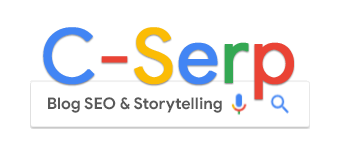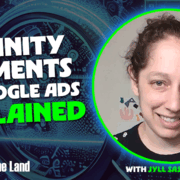Google Ads Affinity Segments: Your guide to Interest-Based Targeting

There are thousands of different audiences you can target in Google Ads, and we’ve covered quite a few of them already: in-market segments, life events, detailed demographics, lookalikes and Google engaged audiences. Today, we’re going to explore a more broad audience targeting option: affinity segments.
In this article, I’ll cover:
- What are Affinity Segments in Google Ads?
- What Affinity Segment categories exist in Google Ads?
- Where can you use Affinity Segments in Google Ads?
- When should you use Affinity Segments in Google Ads?
What are Affinity Segments in Google Ads?
Affinity segments are one of four types of audience targeting options you have in Google Ads that are built based on Google’s proprietary data. Specifically, affinity segments allow you to reach people based on Google’s understanding of their interests and habits.
Remember, Google constantly analyzes our online behavior; the websites we visit, the videos we watch, the apps we use, and so much more. From all this information, Google can figure out patterns and categorize us into different interest groups.
Overall, there are around 150 different affinity segments that advertisers can choose from for targeting, observation, or exclusion.
What Affinity Segment categories exist in Google Ads?
The 150 affinity segments in Google Ads are organized under a dozen main categories. These categories cover a wide range of topics, including:
- Banking & Finance
- Beauty & Wellness
- Food & Dining
- Home & Garden
- Lifestyle & Hobbies
- Media & Entertainment
- News & Politics
- Shoppers
- Sports & Fitness
- Technology
- Travel
- Vehicles & Transportation
Under each category, you’ll find more specific options. For example, under “Banking & Finance,” you can choose affinity segments for “Avid Investors,” defined as “People who actively invest their money, follow financial markets, and regularly read financial or business news,” or “Banks Online,” defined as “People who regularly use online banking services for their banking needs.”
Where can you use Affinity Segments in Google Ads?
You can apply affinity segments across all of the major Google Ads campaign types, including:
- Search
- Shopping
- Display
- Demand Gen
- Video
You can also incorporate affinity segments into your Performance Max or App campaign audience signals, and you can include them in your Combined Segments.
When should you use Affinity Segments in Google Ads?
Although you can use affinity segments in all of your Google Ads campaigns, it doesn’t mean you should. Since affinity segments are all about interests rather than intent, they’re generally most effective for broader prospecting campaigns. This means you’re trying to reach people who are likely to be interested in your product or service one day, even if they aren’t actively looking for it right now.
Let’s illustrate this with a concrete example. Let’s say you sell vegan, organic dog food. How might you target potential customers using different audience types in Google Ads?
- In-Market Segments: You could target people who are currently in the market for dog food. These are people actively researching or looking to buy dog food right now.
- Custom Segments: You could create a custom segment of people who have searched for specific terms like “organic dog food” or “vegan dog food.” These people are showing direct intent by searching for your products on Google.
- Affinity Segments: You could target the type of person who would be likely to buy vegan, organic dog food, such as “Dog lovers,” “Green living enthusiasts,” “People who prefer organic food,” “Vegetarians” or “Vegans.”
These affinity audiences are much broader than the in-market or custom segment options, but they allow you to reach a larger group of people who share characteristics or interests that align with your ideal customer.
I generally don’t use affinity segments in Performance Max audience signals or in my Search or Shopping campaigns, because those campaign types are often focused on capturing more immediate intent. However, affinity segments can be valuable for Display, Demand Gen, or Video campaigns when your goal is to build brand awareness and reach a wider audience.
This article is part of our ongoing bi-weekly Search Engine Land series, Everything you need to know about Google Ads in less than 3 minutes. Every other Wednesday, Jyll highlights a different Google Ads feature, and what you need to know to get the best results from it – all in a quick 3-minute read.


